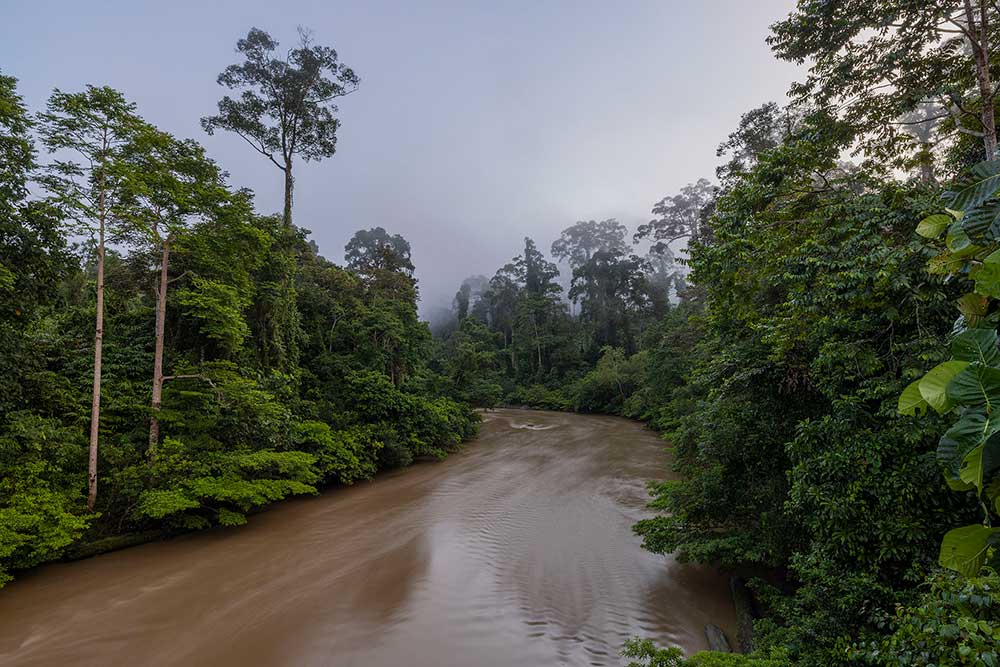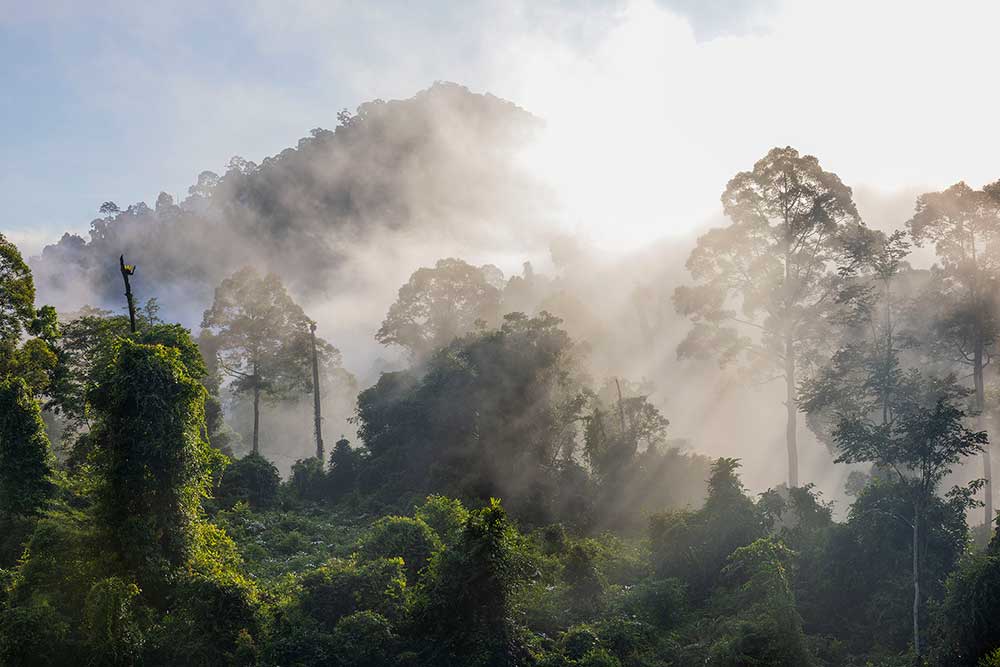
The Tropical Lowland Rainforest from Borneo
Background
The tropical rainforest of Borneo, the third largest island in the world, is threatened by the greed of the timber and palm oil industries.
The island, located in the Malay Archipelago in southeast Asia, is home to the orangutan as well as the critically endangered Borneo pygmy elephant, a subspecies of the forest elephant. You can also find the eastern gibbon and the striking proboscis monkeys here. The rainforest plays a vital role in the global circulation of the atmosphere by balancing air masses at different temperatures, which in turn have a climate-regulating and cooling function on the planet.
Rainforests like the Bornean one, also store huge amounts of carbon. That’s why it is so important to protect these so-called lowland rainforests.
Scenery
That’s an incredible diversity of species and biodiversity can still be found here and precisely why the conservation of species and nature is of particular importance. We are not only dependent, but also benefit greatly from an intact ecosystem. Like everywhere in the protected areas on Borneo, the sanctuaries offer a good opportunity to get close to the orangutans. Another good place to experience an intact rainforest and to observe great apes in their natural habitat, is the Danum Valley. You need a little bit of luck to spot the Borneo pygmy elephant, as there are only about 1000 left of its species in this region. However, with some patience you might have a better chance of spotting the animal along the Kinabatangan River.
Equipment
To get an overview perspective of the rainforest, a higher vantage point is, of course, an advantage. For most wildlife motives I use a Canon 200-400mm f/4 L lens, which cannot be beaten for flexibility. It doesn’t matter if the orangutan, or even the much faster gibbon moves through the trees or if the distance between the boat I am shooting from, and the animals changes again and again due to the river current.
Making of
Of course, it rains in the rainforest, but it’s usually just short, heavy showers, after which it clears up again and offers incredible light for taking photographs. Especially in the morning, after overnight rain, the forest is covered in mystical clouds of fog.
Der tropische Tiefland Regenwald von Borneo
Hintergrund
Der tropische Regenwald von Borneo, der drittgrößten Insel der Welt ist von der Profitgier der Holz- und Palmölindustrie bedroht. Die Insel liegt im Malaiischen Archipel in Südostasien und beheimatet den Orang Utan, sowie den stark bedrohten Borneo-Zwergelefanten, eine Unterart des Waldelefanten. Aber auch der östliche Gibbon und die markanten Nasenaffen sind hier zuhause. Die so wichtigen Regenwälder sind stark an der globalen Zirkulation der Atmosphäre beteiligt. Sie schaffen durch verschieden temperierte Luftmassen einen Ausgleich und haben eine klimaregulierende und kühlende Funktion auf der Erde. Aber solche Regenwälder, wie der auf Borneo sind auch riesige natürliche Kohlenstoffspeicher. Darum gilt es die so wichtigen sogenannten Tiefland Regenwälder zu schützen.
Landschaftskulisse
Darum ist hier eine unglaubliche Artenvielfalt und Biodiversität vorzufinden und gerade deshalb ist hier auch der Arten-und Naturschutz von besonderer Bedeutung. Denn wir sind nicht nur abhängig, sondern profitieren auch von den intakten Ökosystemen. Wie überall auf Borneo bieten die Schutzgebiete eine gute Gelegenheit den Orang-Utans nahe zu kommen. Auch ist das Danum Valley ein guter Ort, um noch intakten Regenwald zu erleben und Menschenaffen in freier Wildbahn – und nicht durch zufüttern – zu beobachten. Um den Borneo Zwergelefanten zu erwischen braucht man ein wenig mehr Glück, da es in diesem Teil der Region nur noch etwa 1000 Exemplare gibt. Aber entlang des Kinabatangan Flusses besteht, mit ein bisschen Geduld, eine bessere Chance, ein Tier zu entdecken.
Ausrüstung
Um eine Überblicks Aufnahme vom Regenwald zu bekommen ist ein höherer Aussichtspunkt natürlich von Vorteil. Für die meisten Tierfotos benutze ich ein Canon 200-400mm f/4 L Objektive, was an Flexibilität nicht zu schlagen ist. Da macht es auch nichts wenn der Orang-Utan, oder der noch viel schneller Gibbon sich durch die Bäume bewegen oder sich der Abstand es Bootes, von dem aus ich fotografiere, zu den Tieren durch die Fluss Strömung immer wieder ändert.
Hinter der Kamera
Natürlich regnet es im Regenwald, aber meist sind es nur kurze, heftige Schauer, danach klart es wieder auf und beschert bestes Fotolicht. Gerade am Morgen, nach nächtlichen Regenfällen, ist der Wald von mystischen Nebelschwaden durchzogen.












